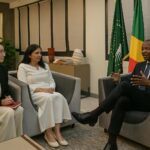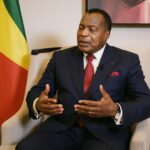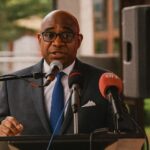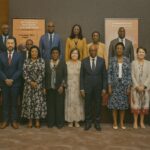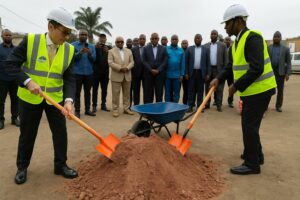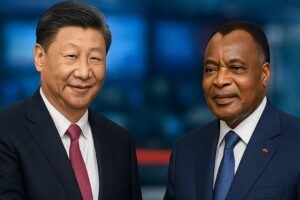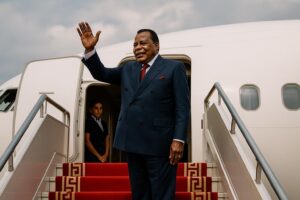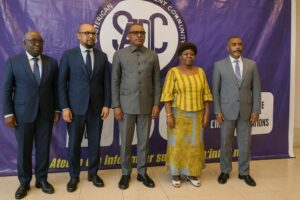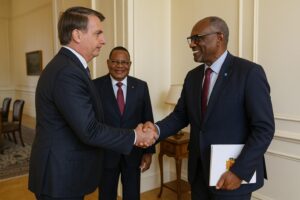A Debt Conversion Model Tested by Time
When Brazzaville and Paris initialed the Contrat de désendettement et de développement in 2010, the arrangement was hailed by international financial institutions as an archetype of debt-to-development diplomacy. By recycling French bilateral arrears into project finance, the mechanism promised to accelerate the Republic of Congo’s pursuit of the Sustainable Development Goals while lightening its external debt stock (French Development Agency). Fifteen years on, the eighth session of the Orientation and Monitoring Committee provides a moment to measure how theory withstands economic headwinds and evolving domestic priorities.
The July 10 gathering—co-chaired by Finance Minister Christian Yoka and French Ambassador Claire Bodonyi—brought ministers, technical advisers and multilateral observers into the same room. Their mandate remains threefold: evaluate execution, coordinate actors and calibrate planning for the next tranches. Outside the diplomatic salutes, participants confronted a question resonating across African debtor nations: can legacy debt swaps still deliver transformational impact amid post-pandemic inflation and climate-related budgetary stress?
Project Ledger: Achievements and Pending Deliverables
The €229 million envelope—roughly CFAF 150.2 billion—has so far financed thirteen projects and two capacity-building funds. Drainage works mitigating Brazzaville’s flash-flood risk, the training of community social workers and the Lisungi social safety net have all reached completion, offering visible dividends in public health and poverty alleviation (Congo Ministry of Planning). A drive along the city’s new storm-water channels or a visit to a Lisungi beneficiary household offers empirical vindication of the model’s potential to translate macroeconomic restructuring into daily resilience.
Yet the ledger records two cancellations: investments earmarked for Énergie Électrique du Congo’s recovery plan and its vocational centre were shelved when feasibility thresholds shifted. Six additional undertakings—most prominently the scenic Corniche roadway and the Support Project for Agricultural Revival—are scheduled to close between 2025 and 2027. Their timelines now serve as litmus tests for administrative coordination among sectoral ministries.
Social Protection Takes the Podium
Diplomats and technocrats alike converged on a consensus that social equity must remain the leitmotif of the programme. Minister Yoka framed the argument succinctly: enduring development is inseparable from robust social investment. His call for “work around the social sectors” echoed recent findings by UNDP that income inequality has widened in many commodity-exporting states despite headline growth.
The committee singled out Project Telema—aptly named “Stand Up” in Lingala—as emblematic of this pivot. By channeling conditional cash transfers toward micro-enterprise initiatives, Telema aspires to convert transient assistance into self-sustaining livelihoods. Ambassador Bodonyi invoked the 50,000 ultra-poor citizens already served by Lisungi as precedent, underscoring France’s readiness to broaden the dialogue with other donors to scale similar efforts.
Inflationary Pressures and Adaptive Financing
A recurrent undercurrent in the closed-door exchanges was the global surge in construction costs. Within the space of two fiscal years, tender prices for civil works in Central Africa have climbed by an average of 20 percent (African Development Bank). Bodonyi cautioned that the original envelopes “no longer cover the entirety of planned activities,” a reality also acknowledged in the latest IMF Article IV consultation for Congo.
Rather than interpret the shortfall as a setback, the committee proposed pragmatic recalibration. Priority actions include a granular cost-benefit analysis of every project, reprioritisation of disbursements toward high-impact social components and the institutional strengthening of monitoring cells within the Finance and Land-Use ministries. Such measures, participants argued, will safeguard value for money without diluting developmental intent.
Strategic Horizons for a Maturing Partnership
Beyond spreadsheets and progress charts lurks a strategic dimension seldom voiced in press communiqués. France’s intellectual investment in the C2D mechanism bolsters its broader Indo-Pacific and Sahelian repositioning by sustaining a narrative of constructive engagement in francophone Africa. For Brazzaville, the platform complements President Denis Sassou Nguesso’s National Development Plan, which prioritises human-capital formation alongside infrastructure modernization.
Both capitals appear cognizant that the model’s credibility rests on visible, inclusive outcomes by 2027. Whether through an upgraded higher-education network under the AMES project or diversified agricultural value chains, the stakes are reputational as much as economic. As international finance edges toward blended instruments and carbon-linked swaps, the France-Congo experiment offers an instructive case study: diplomacy can indeed turn debt into development, provided that the calculus stays responsive to local realities and global price shocks.


